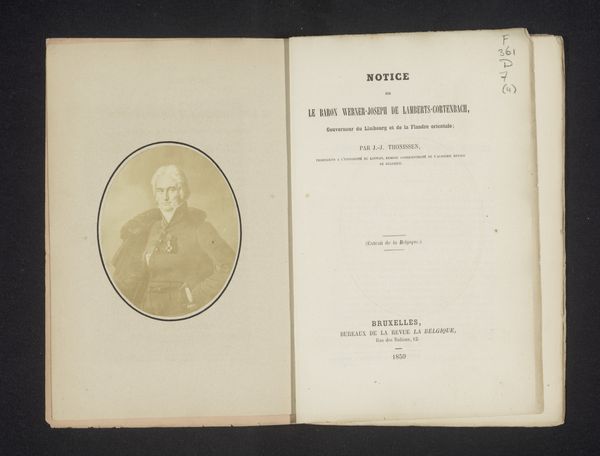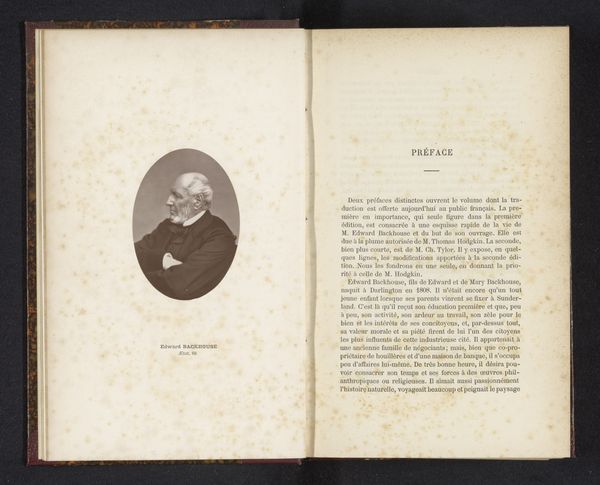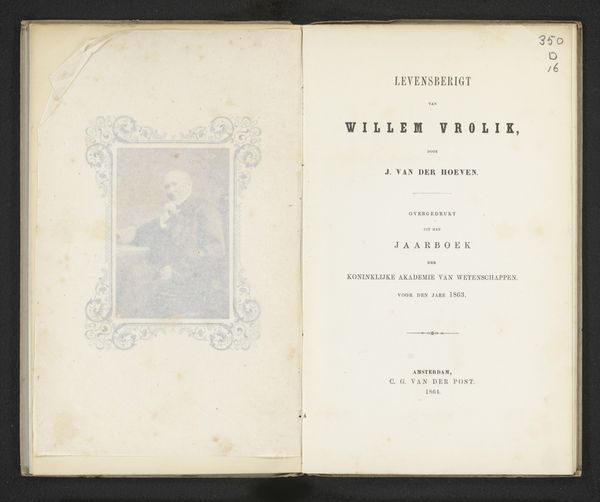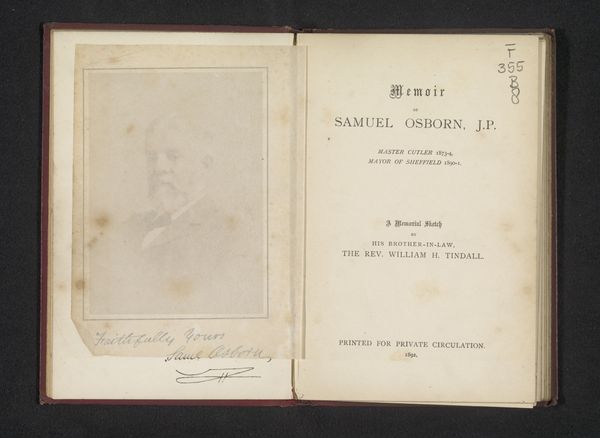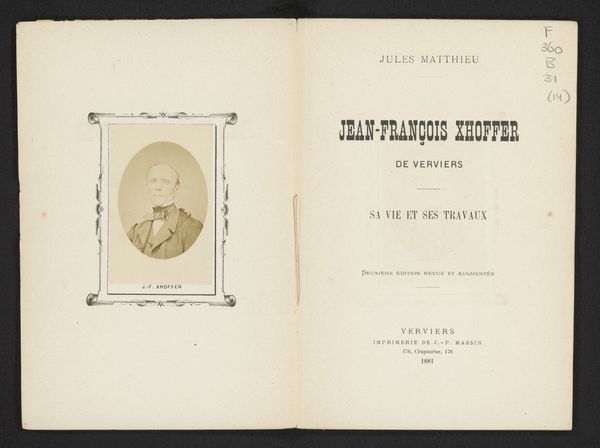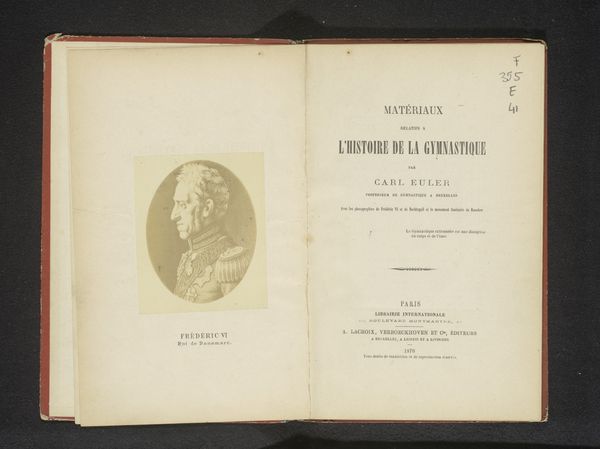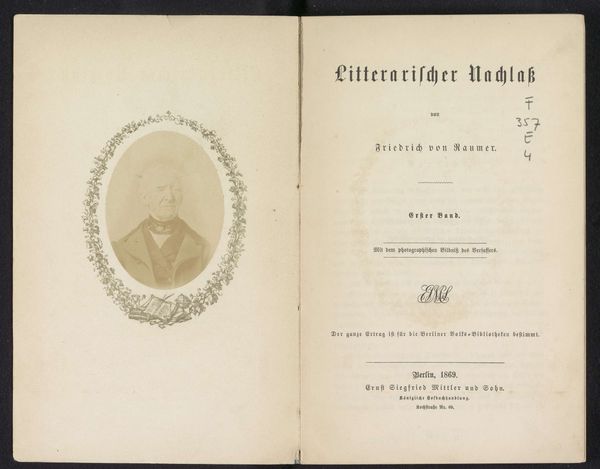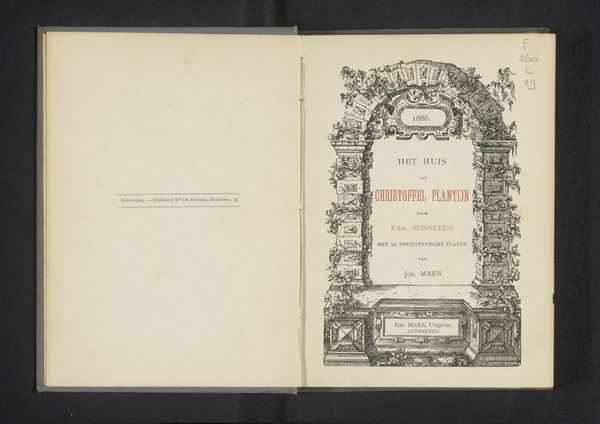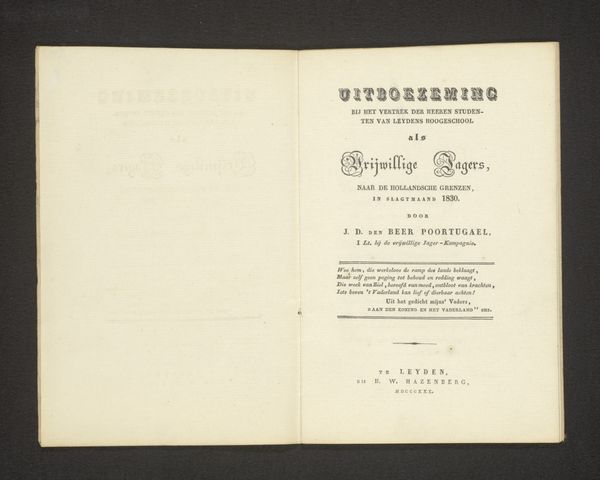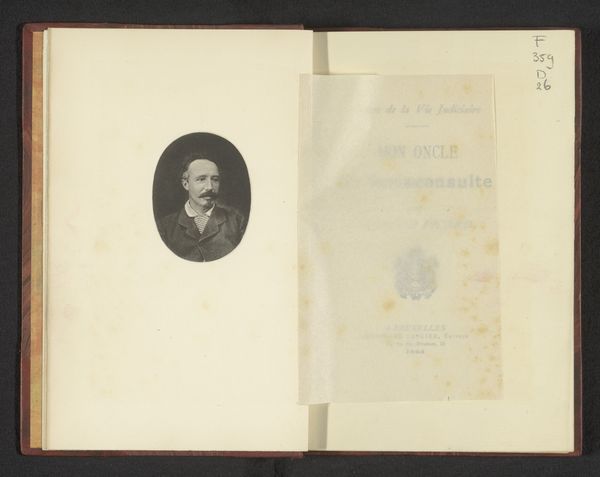
Dr. John Baptist v. Kirscher's nachgelassene kleinere Schriften 1868
0:00
0:00
#
portrait
# print
#
book
#
coloured pencil
Dimensions: height 202 mm, width 124 mm, thickness 15 mm
Copyright: Rijks Museum: Open Domain
Curator: Well, that's sombre. Is it just me, or is there a distinct air of melancholy clinging to this open book? Editor: We're looking at "Dr. John Baptist v. Kirscher's nachgelassene kleinere Schriften", from 1868. It's a print that features a portrait of Kirscher opposite the book's title page. Observe how the composition adheres to a bipartite scheme, divided equally between text and image. Curator: A photograph, huh? Makes him feel almost hauntingly present. He’s gazing right at us from beyond the veil of time, the light fading around the edges like he might vanish completely if we blink. It has biographical notes and photographs; I'm surprised more people aren't drawn to things like this. Editor: Precisely, there’s an inherent dialectic here, a discourse between Hirscher’s physical representation and the textual landscape encapsulating his intellectual contributions. Note the textural variations in the paper— the subtle gradations contribute depth and richness. Curator: Almost like the print medium itself is reflecting something of the writer's inner complexity, the different paper grain expressing diverse thoughts. Yet, that starkness of presentation seems deliberate too, emphasizing rigor, the importance of serious study, perhaps. What do you see in the semiotic language of fonts? The font chosen almost communicates authority in a rather somber way, don’t you think? Editor: Indeed. The selection of gothic typefaces further entrenches the composition within a specific temporal and intellectual milieu. Observe the structural parallelism: a mirror reflecting intellectual weight, not fleeting sentiments. Curator: You make a beautiful argument. Thinking of its cultural setting... it's like holding a silent conversation with the past. Perhaps if one is careful enough, we could discover some forgotten part of ourselves hiding in the inky depths. Thank you! Editor: Quite. I find this work remarkably poignant for its embodiment of legacy and the enduring nature of scholarship through visual and textual form. Thank you as well!
Comments
No comments
Be the first to comment and join the conversation on the ultimate creative platform.
